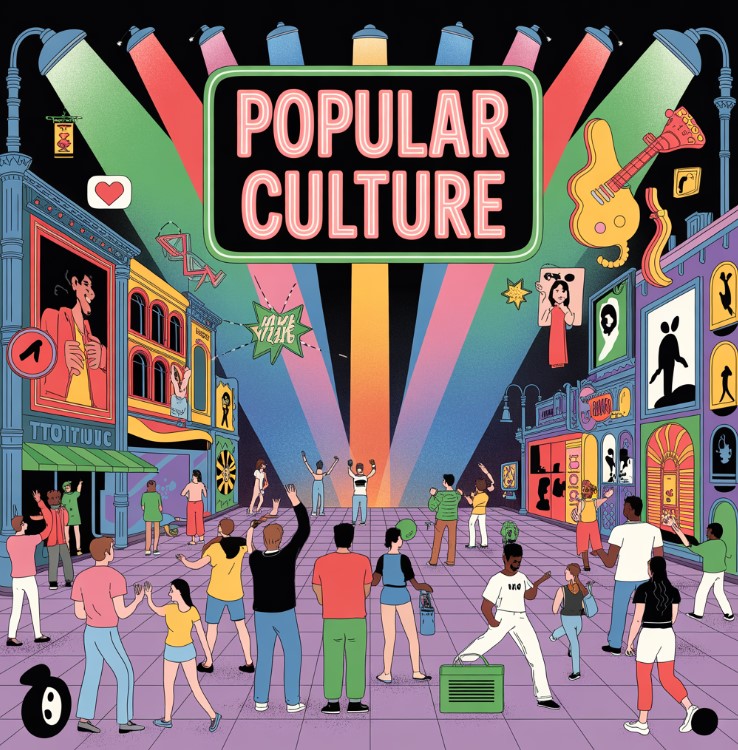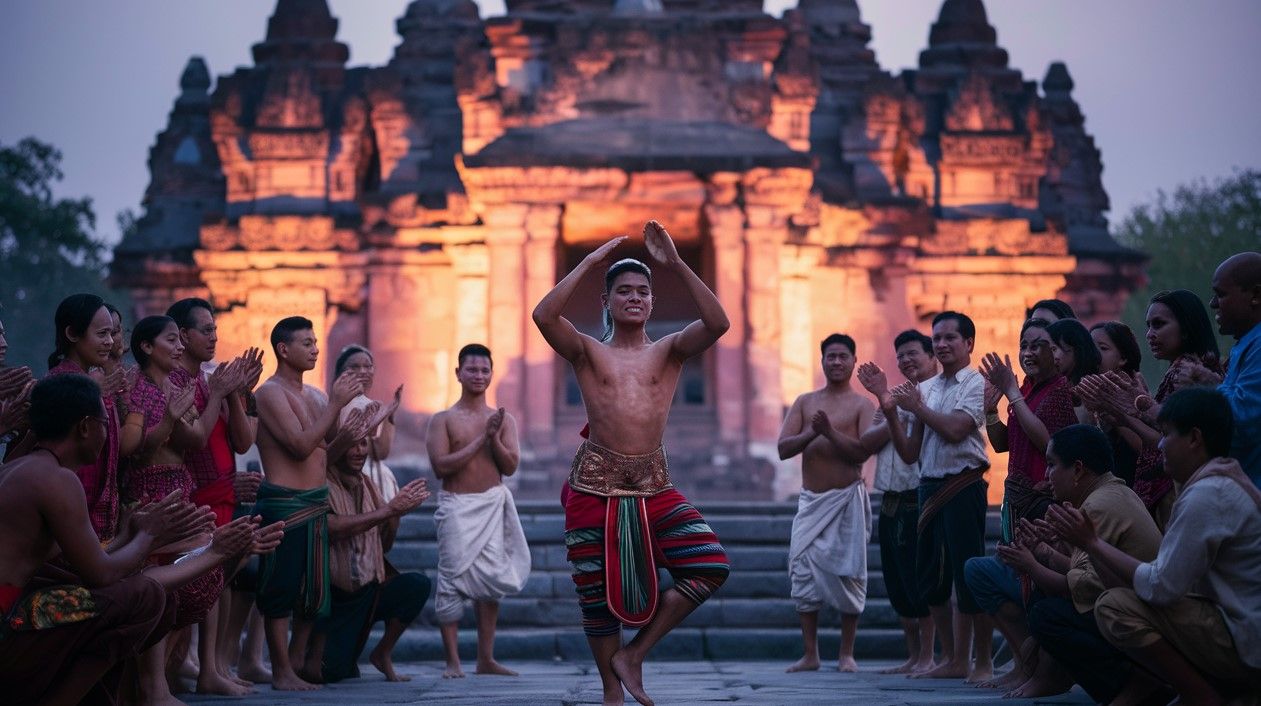Popular Culture: what it is, characteristics and examples

Contents
What is Popular Culture?
Popular culture comprises the everyday ideas, attitudes, and products that are prevalent within a society, acting as a reflection of its people’s shared values and experiences. This cultural expression extends beyond formal art and folklore to encompass the very fabric of everyday existence. Popular culture includes social customs, festivities, common attire, and local ways of speaking.
Popular culture is defined in contrast to the “high culture” of the elite, which is shaped by the tastes and interests of a society’s dominant classes. Thus, popular culture serves as a counterpoint to elite, or official, culture, with theorists like Mikhail Bakhtin noting that each form represents the distinct values and social positions of different societal groups.
In his analysis of the Middle Ages, Bakhtin focused on the carnival as a key manifestation of popular culture—a festival that temporarily suspended the official social order, allowing the expressions of the common people to prevail.
The Foundation of Popular Culture
Working Class Origins
At its core, popular culture is intrinsically linked to the working class, who serve as both its primary creators and consumers. Fundamentally, this group is comprised of the common people, the individuals who make up the lower classes of society.
Additionally, popular culture functions as a key hallmark of a nation’s collective identity. It serves as a vessel for expression of a nation’s unique identity, manifesting the specific customs, traditions, and beliefs of its people.
Cultural Expression Through Various Mediums
Popular culture manifests itself through diverse forms of creative expression:
Music and Rhythm 🎵
This includes a diverse range of musical styles such as jazz, reggae, rap, rock, samba, tango, and folk music. Each genre carries the cultural DNA of its community, telling stories that resonate with ordinary people’s experiences.
Movement and Dance 💃
The domain of dance offers further examples, such as capoeira, flamenco, and the traditional dances of indigenous peoples. These physical expressions carry cultural narratives through movement, preserving history in motion.
Literature and Storytelling 📚
In the literary realm, this includes genres ranging from traditional folk tales, legends, and fables to modern forms like comics, science fiction, and fantasy. These narratives speak to universal human experiences and aspirations.
Visual Arts and Expression 🎨
Visually, urban art showcases popular culture through expressions such as graffiti, community-driven murals, and various forms of street craft. These art forms transform public spaces into canvases for collective voice.
Celebrations and Festivals 🎉
Communal celebrations are a cornerstone of popular culture, with prominent examples including Carnival, the Day of the Dead, and local patron saint festivals. These gatherings strengthen community bonds and preserve cultural memory.
Food and Culinary Traditions 🍴
Gastronomy provides a taste of popular culture, evident in characteristic regional dishes and beloved recipes handed down from one generation to the next. Food serves as both sustenance and cultural identity marker.
Characteristics of Popular Culture
Defining Features
As a cornerstone of national identity and a vital mode of community expression, popular culture is defined by several fundamental characteristics:
- It is defined by its grassroots origins, emerging organically from the people and serving as a mirror for their collective worldview.
- A significant portion of this culture is preserved and passed between generations through the spoken word, in the form of narratives, music, and established customs.
- A key characteristic is its universal accessibility, as it can be understood and appreciated by anyone, regardless of their formal education or training.
- Popular culture is inherently dynamic, continuously adapting and reinventing itself over time by absorbing new influences.
| Characteristic | Description | Example |
|---|---|---|
| Grassroots Origins | Emerges from the people | Folk songs, local festivals |
| Oral Tradition | Passed through spoken word | Storytelling, traditional recipes |
| Universal Access | No formal education required | Popular music, street food |
| Dynamic Nature | Continuously evolving | Fashion trends, slang language |
Popular Culture vs. Mass Culture
Understanding the Distinction
While the terms “popular culture” and “mass culture” are often treated as interchangeable, they are, in fact, distinct concepts.
Popular Culture
As a grassroots phenomenon, popular culture encompasses the artistic and folkloric expressions that arise organically from a community, reflecting its deeply held traditions, values, and beliefs. Its continuity is ensured by being passed down through generations, a tradition that often spans decades or even centuries.
Mass Culture
In contrast, mass culture originates from the culture industry, where it is mass-produced and marketed to a broad, general audience. Consequently, it relies on marketing and advertising to drive its promotion and ensure its commercial profitability.
Therefore, unlike the unique expressions of popular culture, mass culture is characterized by standardized products created to appeal to majority tastes.
Popular Culture vs. Elite Culture
The Cultural Divide
Popular and elite culture are generally understood to represent a central dichotomy within a society’s field of cultural expression.
Elite Culture
Often referred to as ‘high art,’ elite culture encompasses the academic and sophisticated creative works that resonate with the aesthetic values of the dominant social classes. Elite culture is exemplified by artistic disciplines like opera, classical music, and ballet.
Popular Culture as Counter-Movement
In contrast, popular culture arises as a direct counter-movement to this erudite, or ‘high,’ culture. It springs from the common people, drawing its substance and character from their shared system of values, beliefs, and traditions.
Key Differences
| Aspect | Popular Culture | Elite Culture |
|---|---|---|
| Origin | Common people | Dominant social classes |
| Accessibility | Universal appeal | Requires education/training |
| Transmission | Oral tradition | Formal institutions |
| Purpose | Community expression | Aesthetic sophistication |
| Evolution | Organic adaptation | Academic preservation |
The Living Legacy
Popular culture continues to serve as the authentic voice of the people, providing a window into the soul of societies worldwide. It remains the most democratic form of cultural expression, where everyone can participate, contribute, and find meaning. Unlike elite culture, which often requires specialized knowledge or training, popular culture speaks a universal language that transcends social boundaries.
As we navigate an increasingly connected world, popular culture adapts and evolves, incorporating new influences while maintaining its essential character as the people’s culture. This dynamic nature ensures its continued relevance and vitality, making it an enduring testament to human creativity and community spirit.
Popular culture is not just entertainment—it’s the heartbeat of society, pulsing with the rhythms of everyday life and carrying forward the collective dreams and aspirations of ordinary people.











